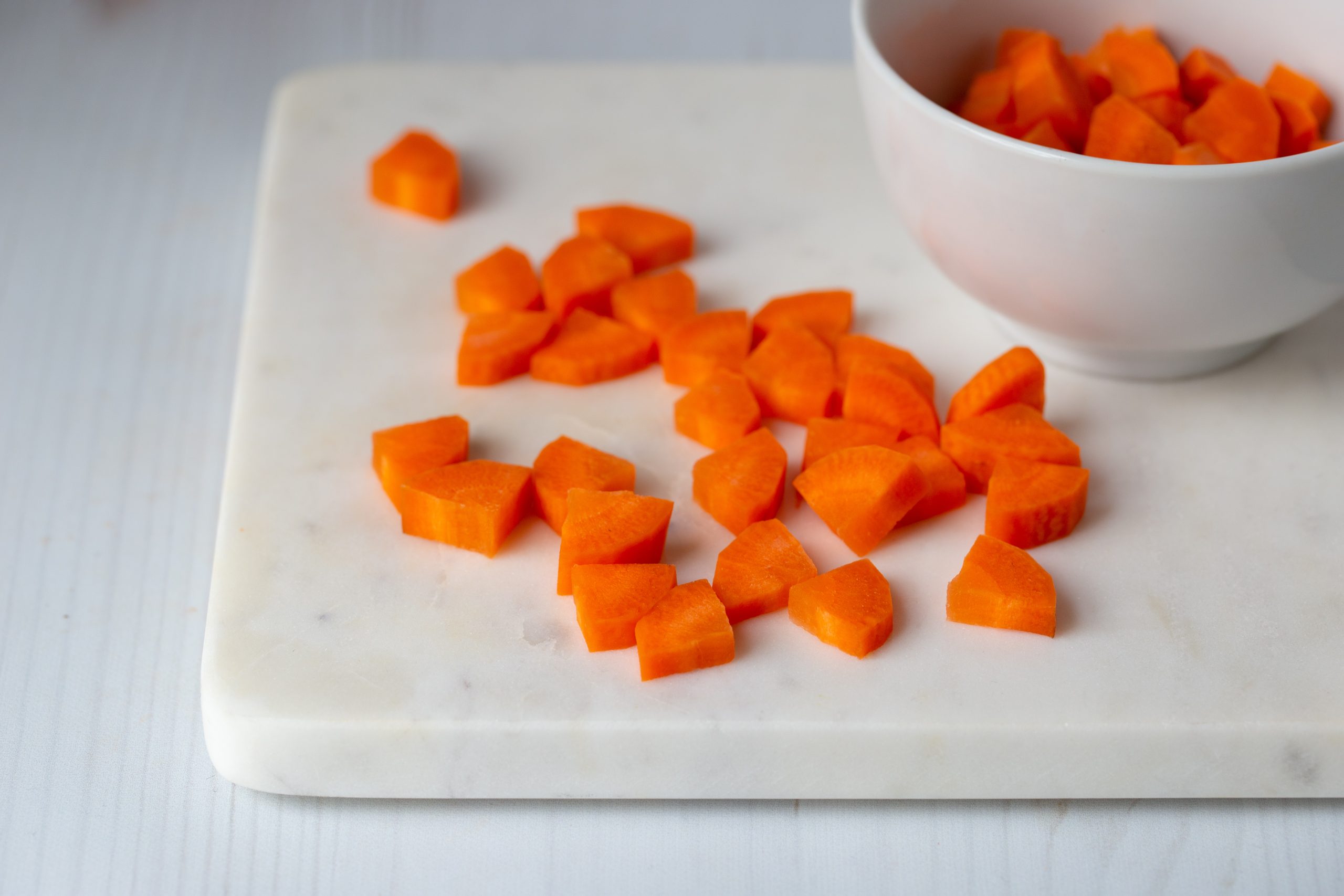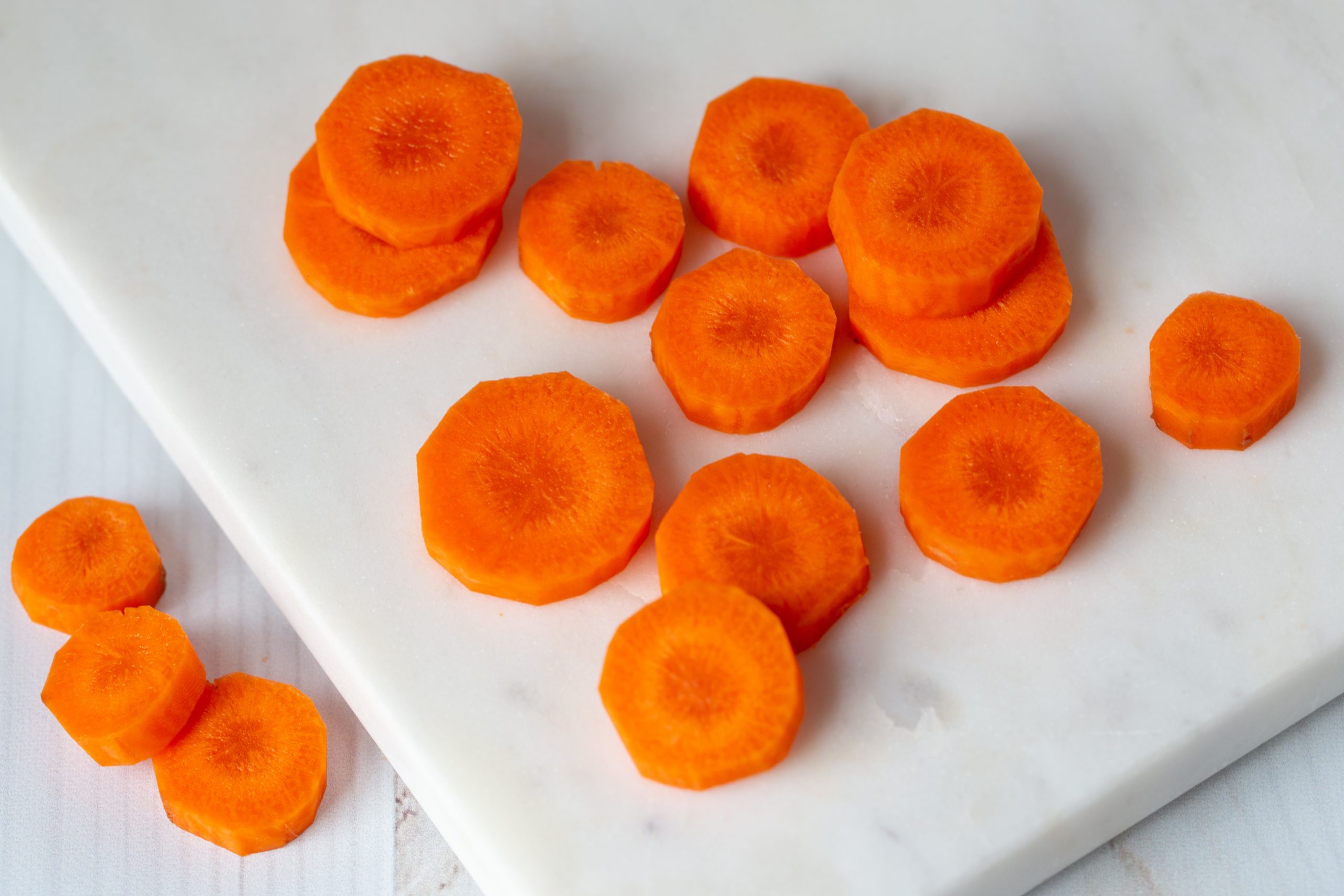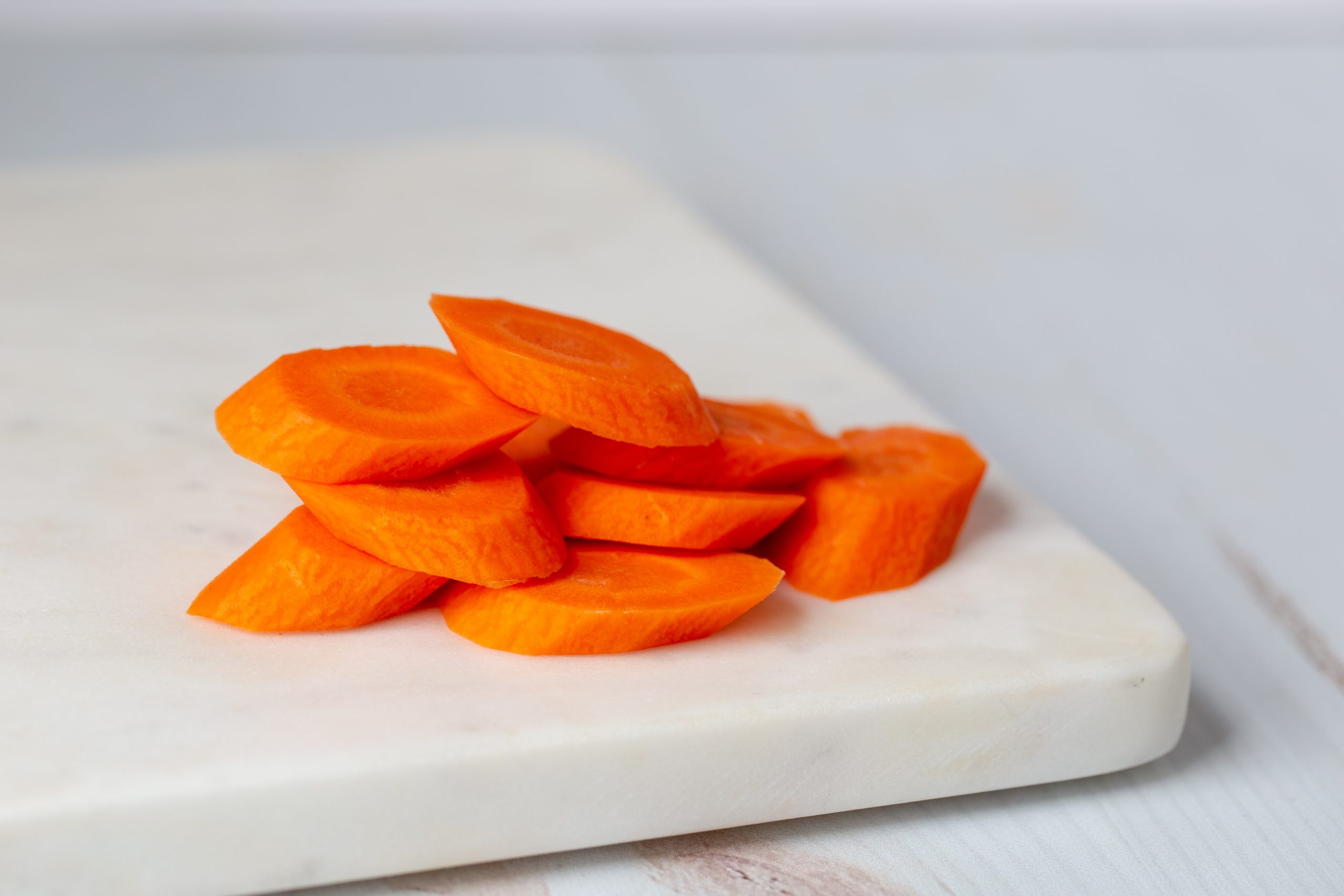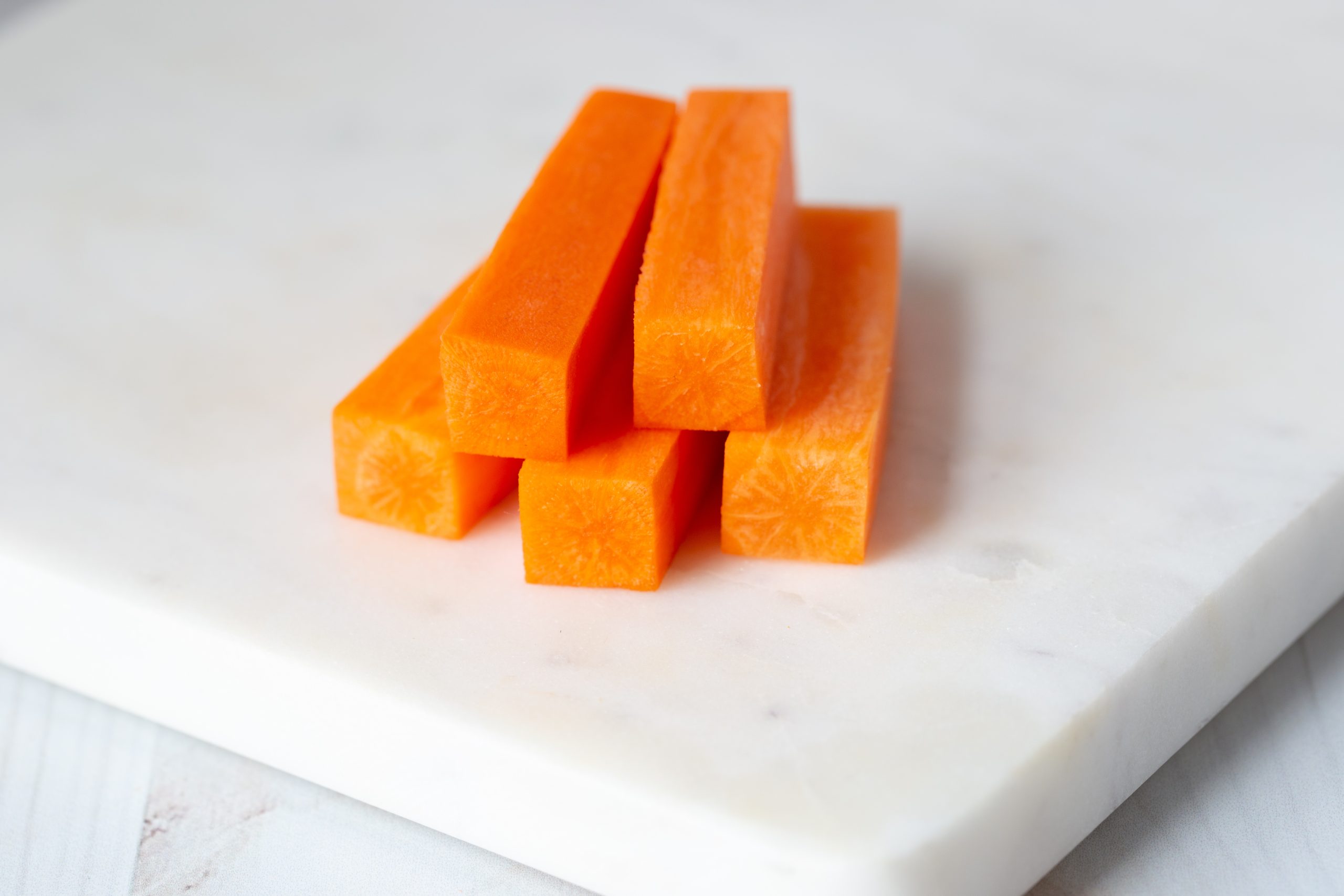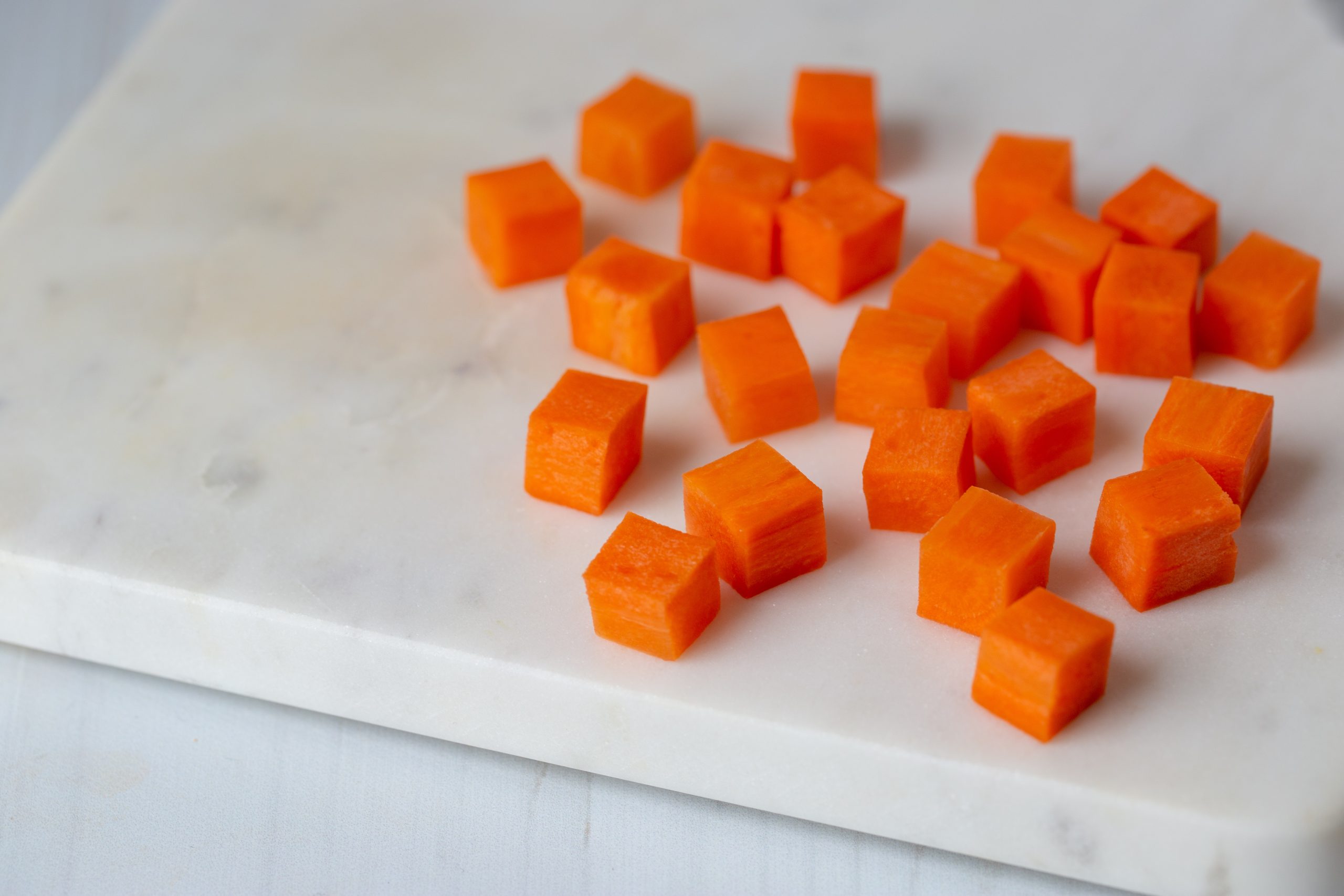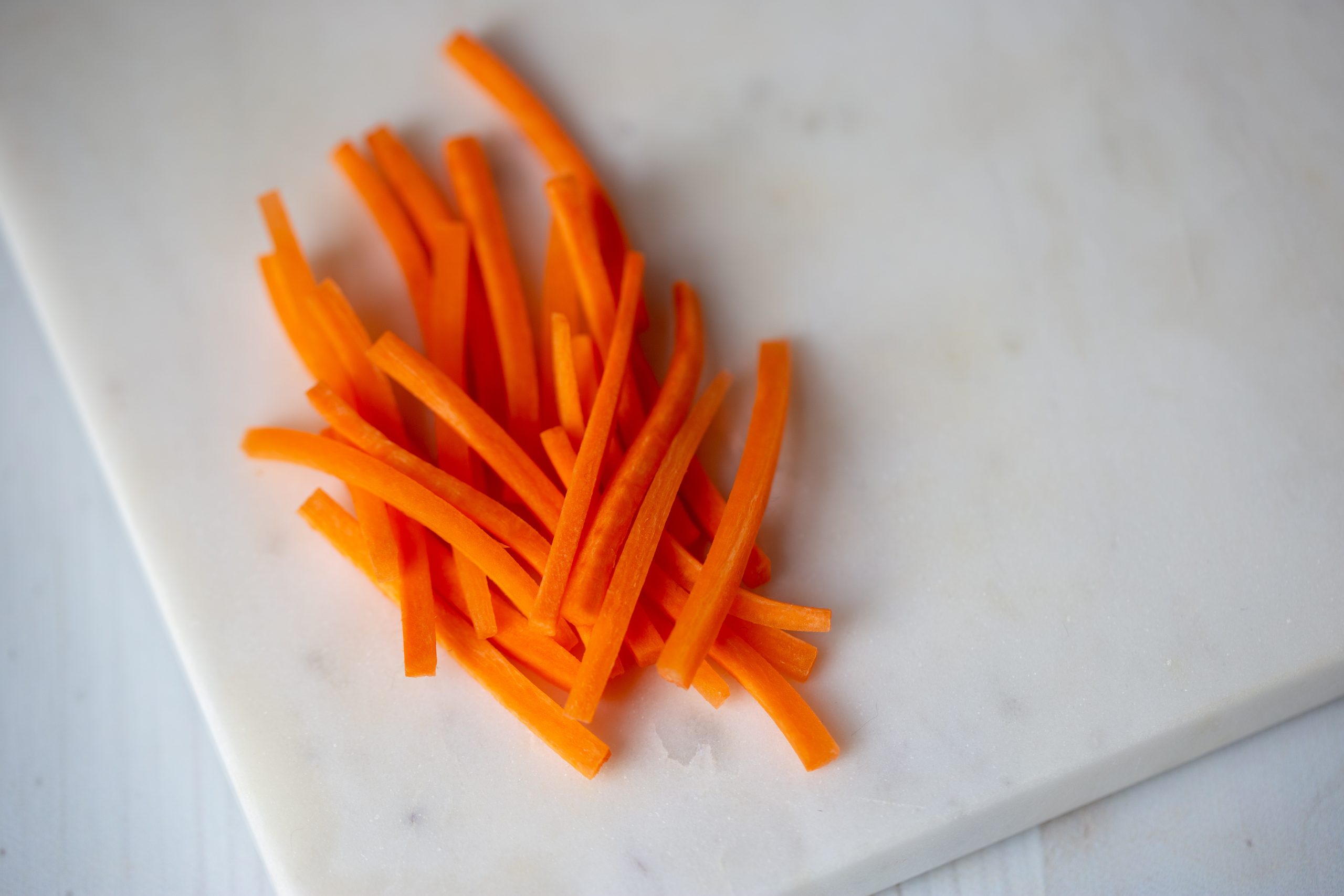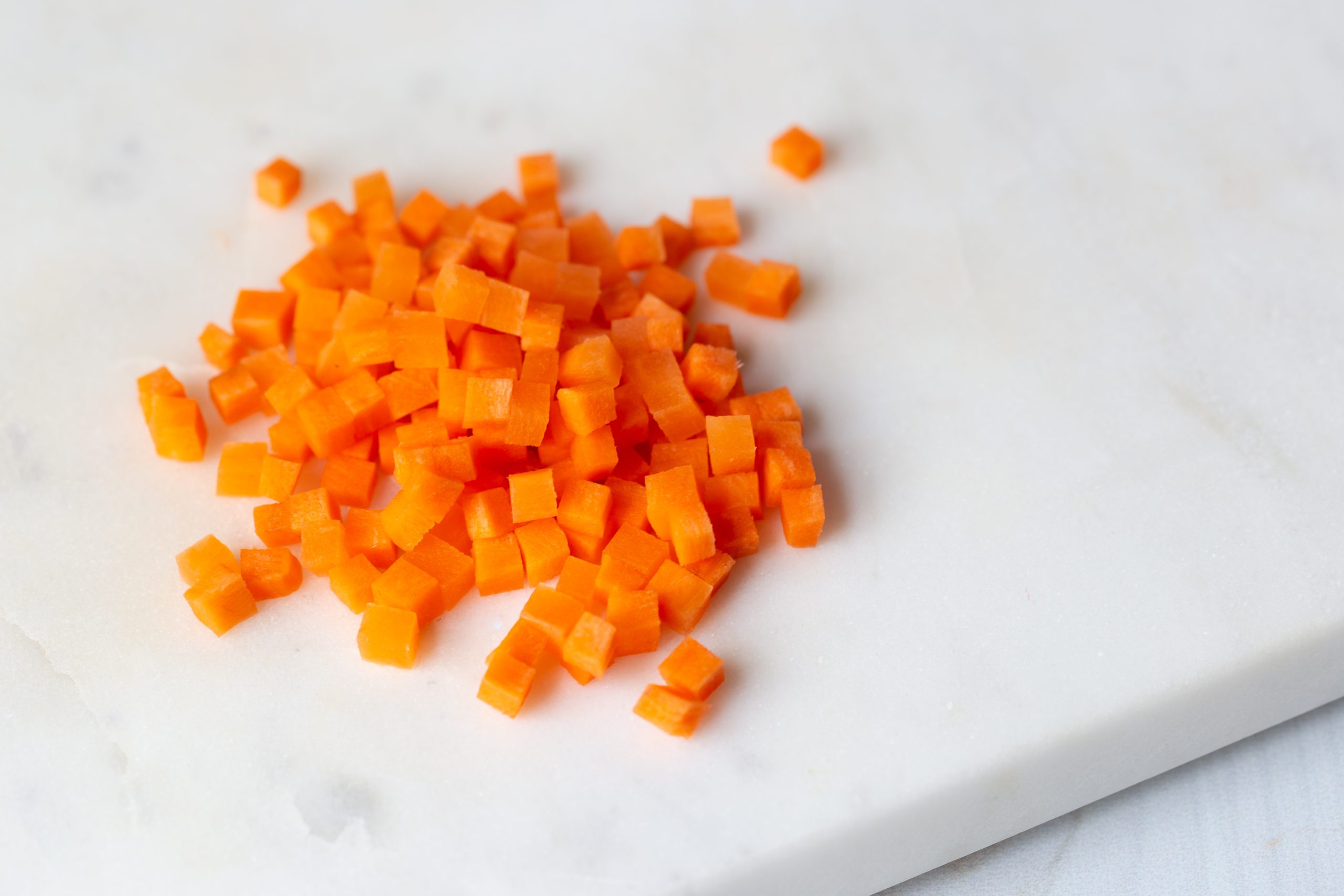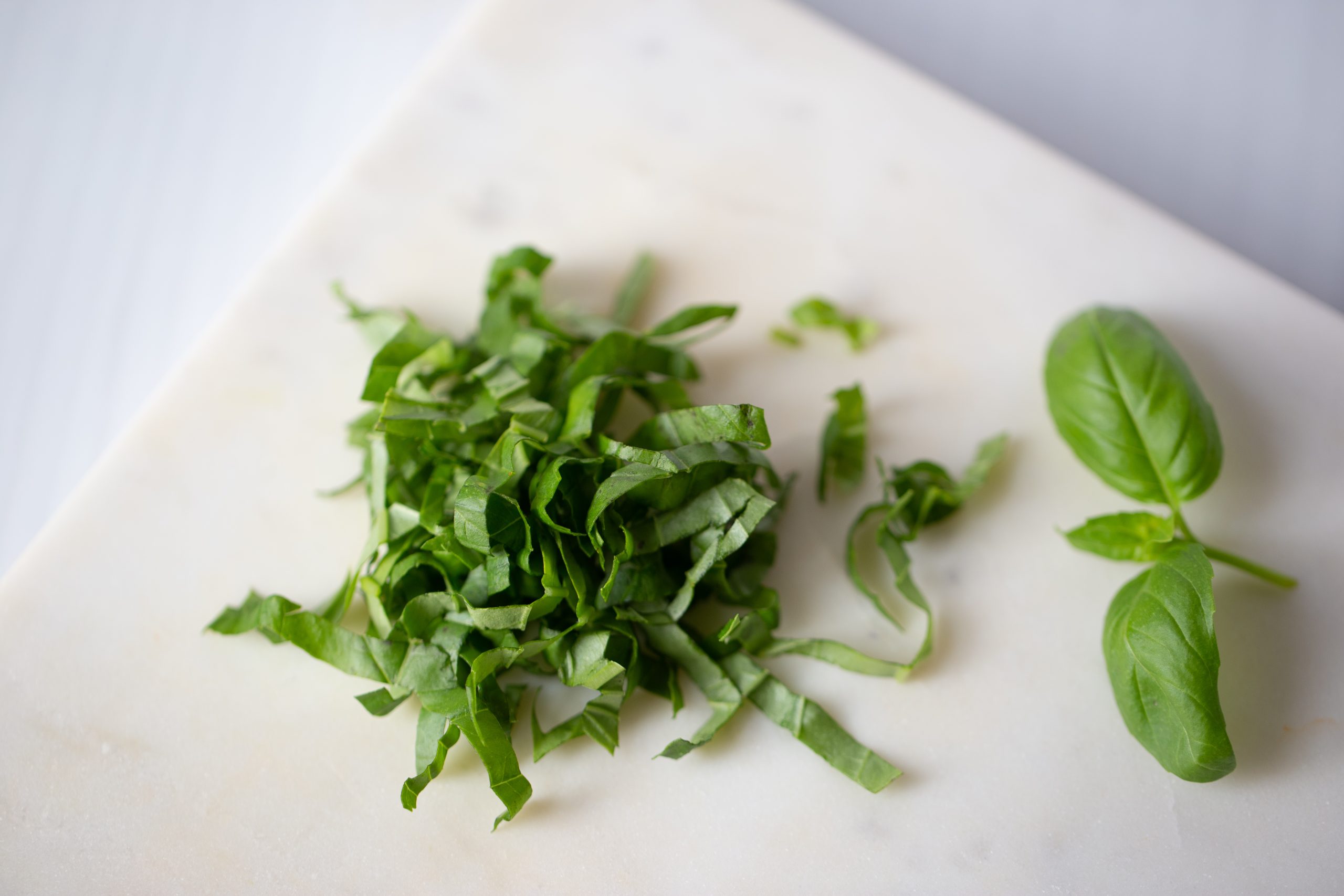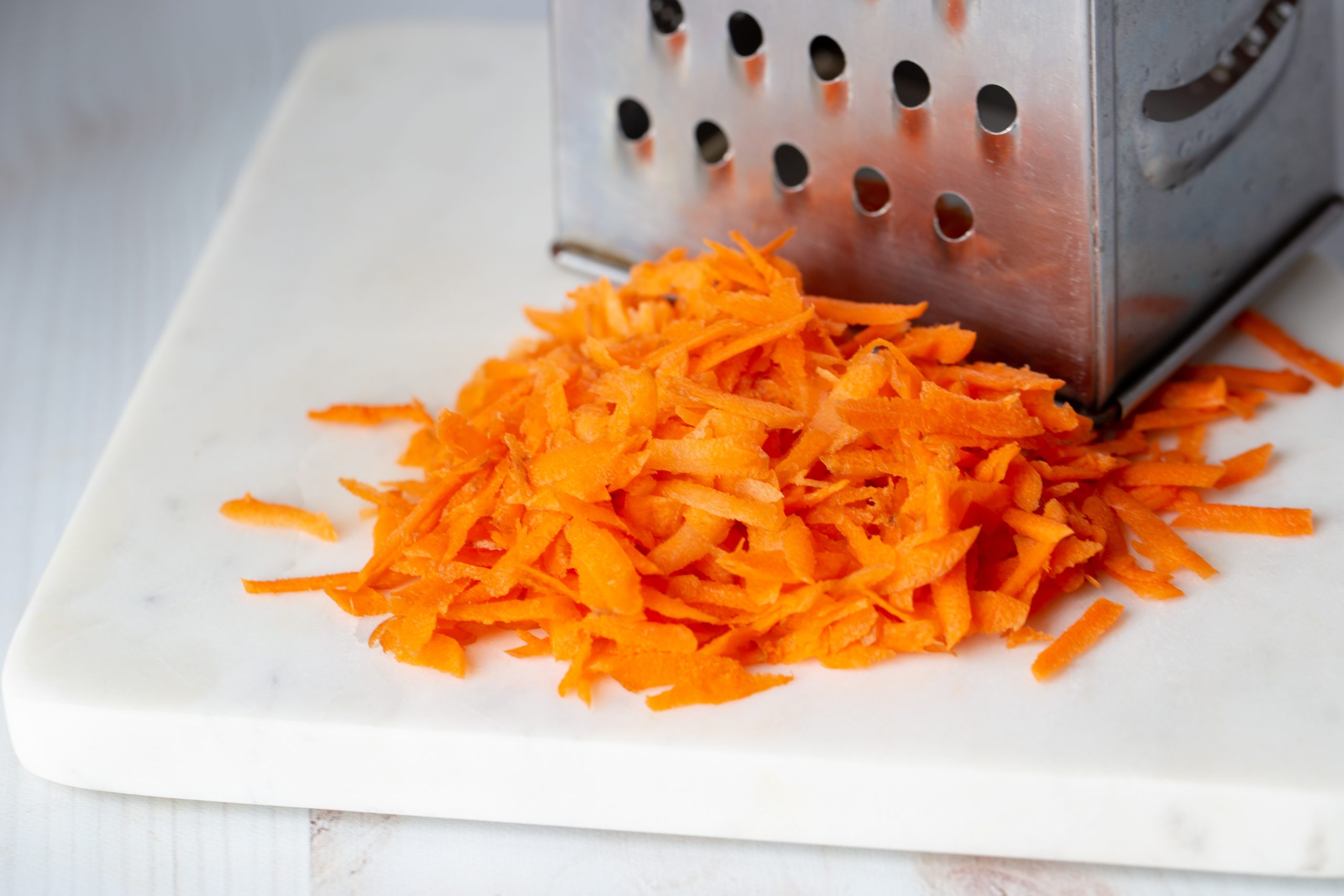
Knife Cuts 101: A Information to Mastering 10 Completely different Cuts
[ad_1]
In case you spend any time within the kitchen making ready meals, having a fundamental understanding of the varied culinary knife cuts will show you how to make higher meals. Many knife cuts are very simple to realize, and studying to make use of the appropriate ones is not going to solely enhance your leads to the kitchen, it should additionally make you appear to be a complete badass!
Don’t be scared off by the time period “knife cuts.” It merely refers back to the many various methods of slicing and shaping meals. In culinary parlance, each form and dimension has a unique identify, in order that when studying a recipe, the individual cooking will know precisely what to do to.
This fancy stuff isn’t only for present. The dimensions and form of greens in a recipe impacts the flavour and texture of a dish, and the way lengthy it must cook dinner. Small items cook dinner sooner than massive items and permit a number of completely different flavors to be a part of the identical chunk. Giant items will retain a extra recognizable taste and rustic texture.
Utilizing the appropriate knife reduce will get the entire items to be the identical dimension so that they cook dinner evenly.
Learn This Earlier than You Begin Practising Knife Cuts
- In case you like having fingers, all the time use a pointy knife that’s massive sufficient for the duty. A very good, sharp chef’s knife is right. Boring knives are harmful; they require considerably extra pressure and may slip simpler.
- Keep in mind to scrub or peel the vegetable if wanted, and take away roots or stems and any blemishes earlier than you start slicing.
- Maintain the vegetable that you just’re slicing securely towards the slicing floor along with your fingertips curled inward away from the blade like a claw.
- At all times place the reduce facet of a vegetable flat towards the slicing board for additional stability earlier than making the subsequent reduce.
- Making fancier knife cuts might really feel wasteful as a result of it creates quite a lot of unused vegetable scraps, however don’t toss these out! Freeze them in a plastic bag to make use of for shares, or simmer them in broth and puree to make a easy soup.
10 Knife Cuts to Enhance Your Kitchen Expertise
Able to degree up within the kitchen? Use this information that can assist you grasp 10 completely different knife cuts.
1. Tough chop (aka large chunks)
A tough chop is precisely what it appears like. Hack a vegetable into a number of items and also you’ll be heading in the right direction. Simply intention to make the items roughly the identical dimension — an inch or two in diameter — in order that they cook dinner evenly. It’s really easy, you might do it along with your eyes closed (however please don’t!).
This knife reduce is mostly used for greens that can taste shares or get pureed or mashed, however it may be a recreation changer for rushing up your time within the kitchen.
Tough chop any and all greens for roasting, steaming, stews, and chilies. The items can be bigger, however heartier, and also you’ll shave valuable minutes off your meal prep actions.
2. Chop (aka the go-to)
Smaller than the tough chop, the essential chop is the house cook dinner’s bread and butter, and your go-to knife reduce for many recipes. Use it at any time when precision, form, and dimension don’t matter.
For this knife reduce, merely reduce the vegetable into small items of comparable dimension in order that a number of items can match collectively on a spoon.
The trick to raised chopping is to let the form of the vegetable information how you chop it. If it’s spherical like a potato, begin by slicing the vegetable into slabs of even width. If it’s lengthy and skinny like a carrot, reduce it into spears first.
If the carrot is thick, reduce it lengthwise as soon as extra, then reduce all of the items in half. To complete this job rapidly and get extra uniform items, collect the carrot sticks right into a bundle and slice them to the specified dimension.
3. Rondelle (aka cash)
This easy knife reduce yields fairly, spherical vegetable slices that may be steamed, sautéed, roasted, or eaten uncooked.
The best strategy to reduce cylindrical greens (like carrots, zucchini, and cucumbers) is to slice them into cash, which in French delicacies is called a rondelle. (Therefore the identify of the reduce!)
To do that, maintain a knife perpendicular to the vegetable and make even slices, normally ⅛- to ½-inch thick.
4. Bias (aka cash with aptitude)
Able to take issues to the subsequent degree? Give your vegetable cash some additional je ne sais quoi by slicing them on a bias, or diagonal.
From a cooking stand level, a bias reduce isn’t a lot completely different from a rondelle reduce. However it does add visible curiosity, so it’s excellent for if you need to exhibit a little bit bit. Plus, it’s fairly simple to do with any cylindrical vegetable. Merely maintain the knife at a forty five diploma angle to the vegetable and slice. That’s it!
5. Batonnet (aka sticks)
Make your veggie tray a factor of magnificence with batonnets. These aren’t your grandma’s carrot sticks… except granny went to the Cordon Bleu.
Batonnets are uniform ½-inch by ½-inch by 2½-inch sticks. That is the knife reduce to apply first if you wish to graduate to extra superior cuts just like the cube, julienne, and brunoise because it’s the start line for all of them.
To do that reduce, first, take away the highest and tail of the vegetable. Then, slice all sides to sq. them off. Lastly, reduce the vegetable into 2½-inch sticks.
In case you’re beginning with a bigger vegetable, like a potato or jicama, sq. off the spherical edges, then slice it into ½-inch thick slabs, after which reduce every slab into sticks.
6. Cube (aka cubes)
In case you run right into a recipe that decision for diced components, this actually simply means to chop them into cubes. There are a number of completely different sizes of cubes:
- A big cube, generally known as a Carré, refers to a ¾-inch dice.
- A medium cube, or Parmentier, is a ½-inch dice (pictured).
- A small cube, or Macédoine, is a ¼-inch dice.
Issues get even smaller from there with best cube, the Brunoise.
To cube, first you need to slice off the spherical sides of the vegetable to create flat edges. Then, reduce that into slabs which might be the width you’re aiming for. Minimize these slabs into batons of the identical width, then into cubes.
The dimensions of cube you employ will rely upon the dish. Giant cube is most typical for root greens and is nice for hearty stews. A medium and small cube can be utilized for many greens and can elevate the looks of any dish from home-cooked to restaurant worthy.
7. Julienne (aka matchsticks)
Ooh, now we’re getting fancy. The julienne is a complicated knife talent that can make your dishes look extra refined. You should utilize it in stir-fries, as uncooked garnish, or when powerful greens can be combined with tender greens, just like the broccoli stems in a kale and broccoli salad.
I’m going to inform you the skilled strategy to julienne, after which advocate you do one thing fully completely different.
For a correct julienne, begin with a batonnet (do not forget that from above?) and slice it lengthwise into 4 ⅛-inch thick planks. Then, reduce every plank lengthwise into matchstick-sized items which might be ⅛-inch large, leaving you with skinny strips which might be squared off on the ends and precisely ⅛-inch by ⅛-inch by 2½-inches lengthy.
In case you aren’t making an attempt to go a culinary examination, then we extremely advocate one other technique that offers you barely much less excellent, however completely acceptable matchsticks. Plus, it should save boatloads of time and create fewer wasted scraps!
Merely slice no matter vegetable you’re utilizing on a slant into ⅛-inch thick rounds which might be two to a few inches lengthy. Stack these slabs, then slice into ⅛-inch strips. Voila, matchsticks!
8. Brunoise (aka fancy pants)
Once you’re aiming to impress or have limitless free time in your fingers, get away the brunoise.
This fussy, meticulous knife reduce takes quite a lot of effort and time, however these exact — and supremely satisfying — tiny cubes would possibly effectively be price your whereas. You’ll appear to be a professional, and really feel like a culinary superhero.
To attain this best cube, begin with a batonnet, reduce it right into a julienne, then stack your matchsticks and reduce them into ⅛-inch cubes.
Use brunoise greens in sauces, make a fragile vegetable soup, or movie your very personal tiny meals movies.
9. Chiffonade (aka learn how to reduce herbs)
To the novice cook dinner, delicate herbs will be difficult little leaves to tame. They’re small and flat already… how do you get them even smaller? I as soon as watched a buddy chop basil for a caprese salad one leaf at a time — that isn’t probably the most environment friendly means and took what appeared like an eternity.
That’s the place the easy-peasy chiffonade reduce is available in. Begin by gathering or stack the leaves of contemporary herbs like basil, parsley, or sage (and even bigger leafy greens like kale or mustard greens) after which roll the stack like a cigar. Slice the roll evenly into skinny ribbons. That’s it!
If the herbs can be used as garnish, simply gently toss them to separate the ribbons earlier than including them to your dish.
10. Mince (aka as small because it will get)
Once you need to finely chop a pungent ingredient like garlic, ginger, contemporary herbs, or citrus peels in order that tiny items will be evenly distributed all through your dish or used as garnish, it’s time to mince.
To mince garlic, for instance, lay your knife blade flat on the clove then press down firmly with the heel of your palm and provides it a great whack. Slice the smashed garlic clove, then flip these slices perpendicular to the blade and hold chopping till the items are very small.
This quantity of mincing will normally do, however there’s a remaining step that with make your mince superfine: use each fingers.
Grip the knife deal with in a single hand and use your free hand to press the tip of the blade towards the slicing board. Rock the curved blade forwards and backwards till the items are as tiny as you may get them. Occasionally, use the edges of the knife to scrape the items right into a pile. If scraps keep on with the blade, rigorously wipe them again into the pile and hold slicing.
Observe this method each time you chop garlic or herbs and also you’ll appear to be a culinary wizard very quickly.
BONUS: Shredded (aka grated)
OK, you bought us, this isn’t a knife talent, and also you already know learn how to do it (hopefully). However, shredded greens are known as for in lots of BODi recipes, so figuring out learn how to make the most of this software will make recipes much more easy.
The field grater is an underused kitchen software, and when you uncover its many makes use of, you’ll marvel why you could have solely been utilizing it for cheese.
Use the most important holes of a field grater or the shredding disc of a meals processor to make cauliflower rice, shred carrots and broccoli stems for salads, zucchini for bread (or burgers!), potatoes for latkes and apples for oatmeal or muffins.
Attempt grating onions as an alternative of chopping them for pasta sauces, or create a contemporary topping for toast or a brilliant salad dressing by slicing a tomato in half and grating the flesh right into a bowl. Be careful, Gordon Ramsay!
[ad_2]

